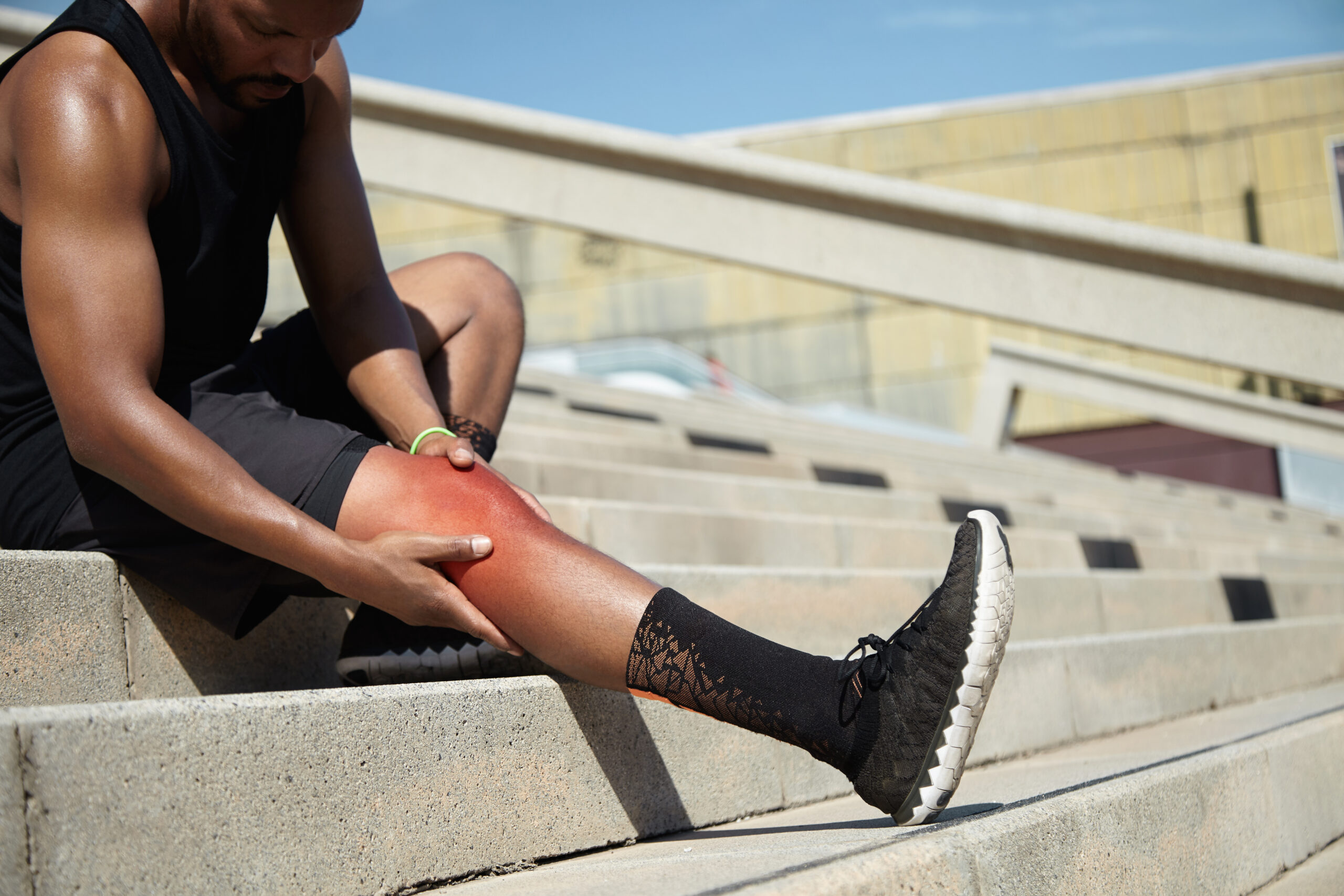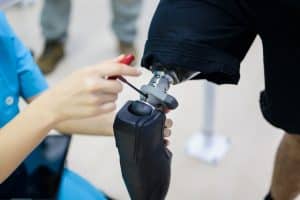Shin splints are a common affliction, especially among military personnel and athletes, due to the physical demands placed on their bodies. For veterans, this seemingly minor condition can have long-term implications, potentially qualifying them for VA disability benefits. Understanding the connection between shin splints and VA disability is crucial for veterans seeking compensation for service-related injuries. Leah Bucholz will explore what shin splints are, how they relate to military service, and the some pathways Veterans often explore for obtaining VA disability benefits.
Table of Contents
What Are Shin Splints?
Shin splints, medically known as medial tibial stress syndrome (MTSS), are characterized by pain along the inner edge of the shinbone (tibia). This pain results from inflammation of the muscles, tendons, and bone tissue around the tibia. The Cleveland Clinic describes it as a common overuse injury, often occurring in athletes, military personnel, and individuals with osteoporosis. The repetitive stress on the shinbones and surrounding tissues, particularly from activities like running and marching, can lead to this painful condition.
Symptoms and Risk Factors
The symptoms typically include pain and tenderness along the inner part of the lower leg. This pain can be sharp or dull and is often exacerbated by physical activity. In severe cases, shin splints can lead to stress fractures, where small cracks form in the bone due to the repetitive strain.
Certain factors increase the likelihood of developing shin splints, including:
- High-impact activities: Running, marching, and other exercises that place repetitive stress on the lower legs.
- Improper footwear: Shoes that do not provide adequate support can contribute to shin splints.
- Flat feet or high arches: Abnormal foot mechanics can increase the strain on the shinbone.
- Sudden increase in activity: Rapidly increasing the intensity or duration of physical activity without proper conditioning.
Shin Splints Impact on Military Personnel
For military personnel, the risk of developing shin splints is particularly high. The physical demands of basic training, regular exercise, and activities like rucking (marching with a heavy backpack) put significant strain on the legs. A study published in StatPearls noted that the incidence of medial tibial stress syndrome ranges from 13.6% to 20% in runners and up to 35% in military recruits. This statistic underscores the prevalence of shin splints among service members, making it a significant concern for active-duty personnel and veterans alike.
Shin Splints and VA Disability
Given the physical demands of military service, it’s not uncommon for veterans to suffer from shin splints long after their service has ended. If shin splints developed during active duty and continue to cause problems after discharge, they may qualify for VA disability benefits. The key to obtaining these benefits is establishing a clear connection between the shin splints and military service.
Direct Service Connection
A direct service connection means that the shin splints were directly caused by activities or conditions experienced during military service. Veterans can establish this connection by providing medical records from their time in the military that document the diagnosis and treatment of shin splints. If a veteran can demonstrate that the condition originated while on active duty and continues to affect them, they may be eligible for VA disability compensation.
Secondary Service Connection
In some cases, this condition may be connected to another service-related condition. For example, if a veteran is already service-connected for a knee or hip injury that alters their gait and subsequently leads to shin splints, the shin splints can be considered a secondary service-connected condition. In such cases, it’s essential to provide medical evidence showing how the primary service-connected condition has contributed to or worsened the shin splints.
Challenges in Obtaining VA Disability for Shin Splints
One of the common challenges veterans face when applying for VA disability for shin splints is the lack of continuity of care. Veterans may develop the condition during service but fail to seek continuous medical treatment after discharge, either because they managed the symptoms on their own or because the condition did not seem severe enough to warrant medical attention at the time. However, when the symptoms worsen over the years, and the veteran applies for benefits, the VA may deny the claim due to the gap in medical treatment records.
Addressing Continuity of Care Issues
To overcome this challenge, veterans can provide “buddy statements” or personal statements that attest to the ongoing nature of the condition. Buddy statements are written testimonies from fellow service members, family, or friends who can verify that the veteran continued to experience symptoms of shin splints after leaving the service. Personal statements can also help bridge the gap, offering a detailed account of how the condition has affected the veteran’s life over the years.
Relevant Research and Articles
Veterans can strengthen their case by referencing medical research that supports the connection between military service and shin splints. Several studies highlight the prevalence of medial tibial stress syndrome in military recruits and the factors that contribute to its development. For instance, the article “Medial Tibial Stress Syndrome in Military Recruits,” published in 1993, discusses how basic training can cause high levels of stress and injury in recruits, with 60% to 70% experiencing injuries within an eight-week period.
Another valuable resource is the article “Studying the Relation Between Medial Tibial Stress Syndrome and Anatomic and Anthropometric Characteristics of Military Male Personnel,” published in 2015. This study examines how certain physical characteristics and conditions, such as vitamin D deficiency, can increase the risk of developing shin splints in military personnel.
VA Disability Ratings for Shin Splints
The VA assigns disability ratings based on the severity of the condition and how it affects the veteran’s ability to function. Ratings for shin splints can range from 0% to 30%, depending on the severity and response to treatment.
30% Rating
A 30% rating is awarded to veterans who have not shown noticeable improvement in their shin splints despite undergoing surgery and non-surgical treatments for at least 12 consecutive months. This rating is the highest available for shin splints and reflects a significant impact on the veteran’s daily life.
20% Rating
A 20% rating is assigned to veterans whose shin splints have not responded to non-invasive treatments for at least 12 consecutive months. This rating also applies to cases where surgery for unilateral shin splints has been unsuccessful.
10% Rating
Veterans who have required non-invasive treatment for at least 12 consecutive months and have not responded to shoe orthotics or other forms of non-surgical intervention may receive a 10% rating.
0% Rating
A 0% rating is given to veterans who have received non-invasive treatment for less than 12 months for either unilateral or bilateral shin splints. Although a 0% rating does not provide monetary compensation, it can establish a service connection that may be increased if the condition worsens.
Seeking Assistance with VA Disability Claims
Navigating the VA disability claims process can be challenging, especially when dealing with conditions like shin splints that may not seem severe on the surface. Veterans are encouraged to seek assistance from accredited Veterans Service Officers (VSOs) or legal professionals who specialize in VA disability claims. These professionals can help gather the necessary medical evidence, file claims, and appeal denials if needed.
Veterans can find accredited representatives through the VA’s website (va.gov), where they can search for professionals in their area or choose to work with someone remotely.
Conclusion
Shin splints are a common but potentially debilitating condition that can arise from the physical demands of military service. For veterans, understanding the connection between shin splints and VA disability is crucial for obtaining the benefits they deserve. Whether through direct or secondary service connection, veterans can receive compensation for the ongoing impact of shin splints on their health and well-being. By gathering the appropriate medical evidence, addressing any continuity of care issues, and seeking professional assistance, veterans can navigate the VA disability claims process more effectively and secure the benefits they are entitled to.
Also read: What to Expect in a C&P Exam for Elbow Pain
At Prestige Veteran Medical Consulting, a veteran-owned company, we specialize in Independent Medical Opinions (IMOs) known as Nexus letters.
Our purpose is to empower YOU, the veteran, to take charge of your medical evidence and provide you with valuable educational tools and research to guide you on your journey.
Understanding the unique challenges veterans face, our commitment lies in delivering exceptional service and support.
Leveraging an extensive network of licensed independent medical professionals, all well-versed in the medical professional aspects of the VA claims process, we review the necessary medical evidence to incorporate in our reports related to your VA Disability Claim.
Prestige Veteran Medical Consulting is not a law firm, accredited claims agent, or affiliated with the Veterans Administration or Veterans Services Organizations. However, we are happy to discuss your case with your accredited VA legal professional.














